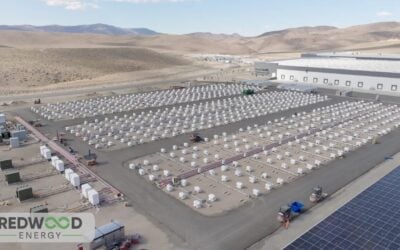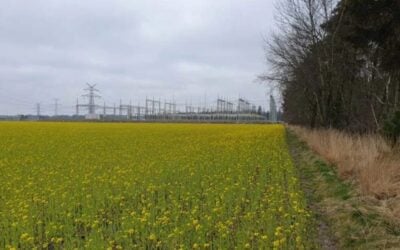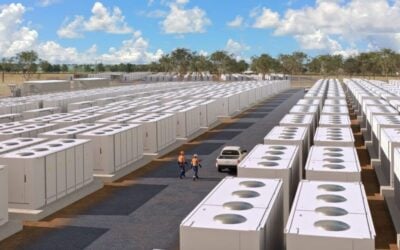Schneider Electric plans 1MWh micro grid in Boston
Visitors being given a tour of Schneider Electric / S&C Electric's Texas advanced microgrid in April last year. Image: S&C Electric.
Schneider Electric will provide a 1MWh energy storage system to be paired with a PV system from Duke Energy-backed REC Solar in the latest project to show how renewables-integrated microgrids can work.
Enjoy 12 months of exclusive analysis
- Regular insight and analysis of the industry’s biggest developments
- In-depth interviews with the industry’s leading figures
- Annual digital subscription to the PV Tech Power journal
- Discounts on Solar Media’s portfolio of events, in-person and virtual
France-headquartered Schneider launched EcoBlade, a scalable lithium ion battery-based storage system, just before the end of last year. The company said at the time that it is targeting a price of less than US$500 per kilowatt-hour.
EcoBlade will be used at the microgrid installation, which is being deployed at Schneider Electric’s North American HQ, the Boston One campus. It will pair the 1MWh of EcoBlade storage with 400kW of PV, which was installed by REC Solar, also utilising Schneider inverters.
The installation will include carport and rooftop mounted PV modules, around 1,600 in total. The microgrid could save Schneider 5% of its campus electricity costs, generating 560,000kWh a year, and adding resiliency from blackouts. The microgrid is linked together with Schneider’s own software.
Duke Energy also has its own microgrid test bed, while an advanced microgrid built by Schneider and S&C Electric for Texas utility Oncor connecting together four interlinked smaller grids was completed in the first quarter of last year. That project was something of a demonstration of the technology and was opened up to visitors for educational tours.
This story by Andy Colthorpe.
Eaton to sell AES Energy Storage's Advancion product in Europe and MENA region
AES's Advancion storage array. Credit: AES Energy Storage
Power electronics and engineering group Eaton is to sell AES Energy Storage’s Advancion energy storage platform as part of its grid-scale storage systems that perform grid-balancing and peak demand services.
Eaton will supply the energy storage systems to utilities, industrial and commercial customers, independent power producers and power system operators across Europe, the Middle East, and Africa (EMEA).
Cyrille Brisson, vice president of marketing, for Eaton’s Electrical business in EMEA, said: “We will be able to mitigate the investment needed for, and the charges and emissions resulting from peak demand infrastructure. The widespread deployment of systems enabling peak capacity, flexible generation and grid services, coupled with the easy consumption of renewables, will help a smarter grid meet environmental targets.”
AES recently switched on the biggest energy storage facility in UK, a 10MW battery-based energy storage system, equivalent to 20MW of flexible resource, in Kilroot, County Antrim, Northern Ireland.
Eaton also recently unveiled a demonstration model of a behind-the-meter energy storage control centre, which has been developed in partnership with carmaker Nissan at Eaton’s research facilities in Switzerland.
Sacramento utility considers 'alternatives' as it cancels 400MW pumped hydro storage project
The board of directors of community-owned electricity company Sacramento Municipal Utility District (SMUD) has elected not to build the 400MW Iowa Hill pumped-storage project as part of a hydroelectric plant due to high costs and financial risk.
The project was to be located along the Upper American River Project at Slab Creek Reservoir in El Dorado County, California however last year an engineering contractor estimated the cost of the project at US$1.45 billion.
A SMUD statement said: “An investment that size would significantly limit the choices SMUD has with regard to future distributed generation technologies and significantly constrains SMUD's future capital investments.”
SMUD also calculated that less than half of the system’s capacity would be needed before 2030. Moreover the company noted that there are likely to be more economical energy storage alternatives, given the progress in energy storage technology of late.
For example Steve Corwell AES Energy Storage’s Europe vice president, recently wrote in Energy Storage News that pumped hydroelectric storage (PHS), long a key complement to the inflexibility of nuclear generation due to its ability to provide on-demand power, had met its match in battery energy storage systems (BESS) with their ability to respond to grid demand in milliseconds in either direction to full capacity or to zero.
The site of the cancelled project. Credit: Google Maps/ SMUD Twitter






